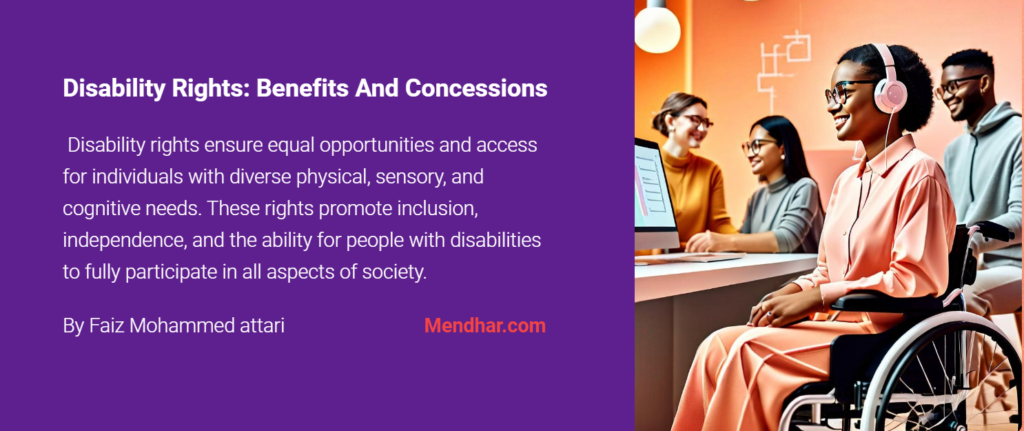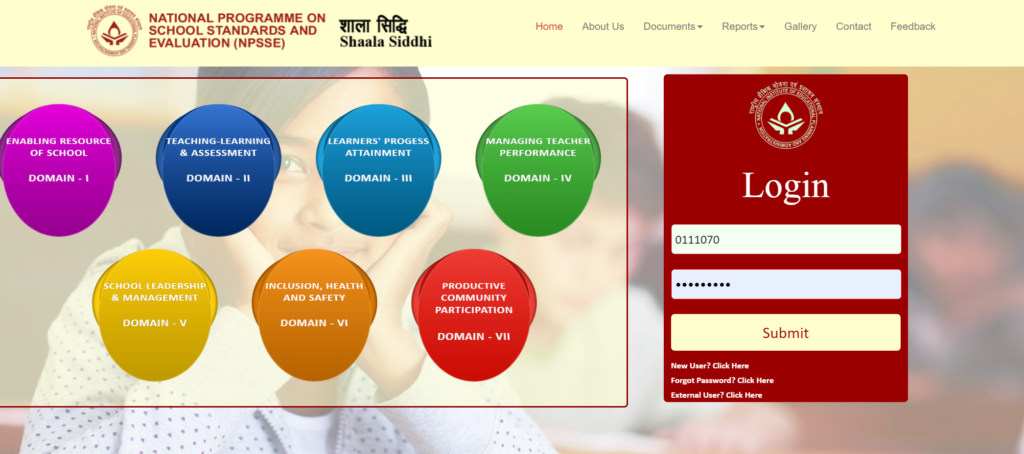Table of Contents
ToggleDisability Rights: Benefits And Concessions-Module 17
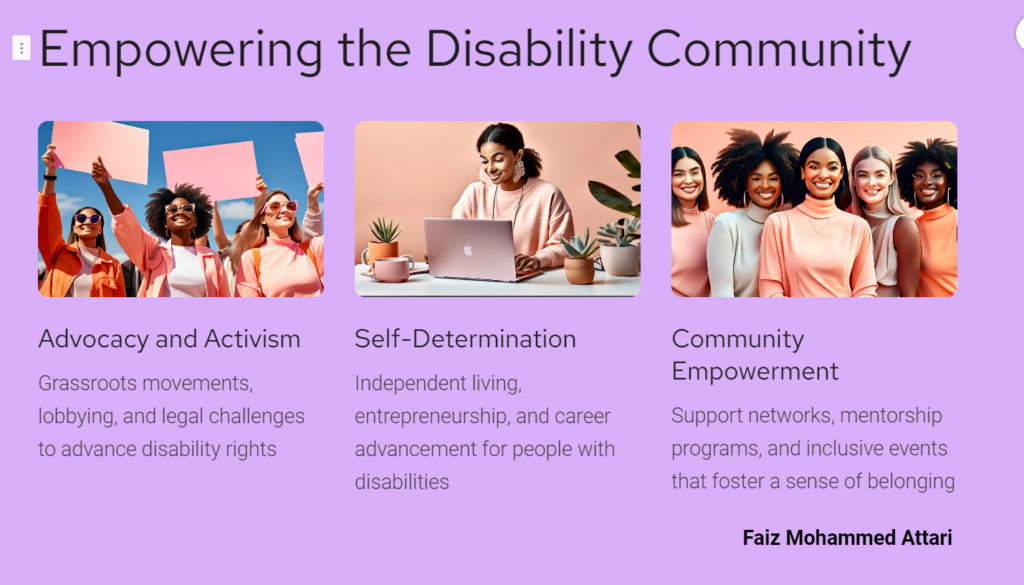
Disability rights encompass a wide range of benefits and concessions aimed at ensuring equal opportunities and access to individuals with disabilities. Here are some key areas where benefits and concessions are often provided:
Accessibility: Governments often mandate accessibility standards in public buildings, transportation, and digital platforms to ensure that individuals with disabilities can navigate and use these facilities and services comfortably.
Employment: Many countries have laws and programs in place to promote employment opportunities for people with disabilities. This may include affirmative action policies, job training programs, and accommodations in the workplace to ensure equal access to employment.
Financial Support: Individuals with disabilities may be entitled to financial support such as disability benefits or pensions to help cover the costs of living and medical expenses. These benefits may be provided by government agencies or private insurance companies.
Healthcare: Access to healthcare services is crucial for individuals with disabilities. Governments often provide healthcare benefits and subsidies to ensure that people with disabilities can access necessary medical treatment, assistive devices, and therapies.
Education: Disability rights include the right to education for individuals with disabilities. This may involve accommodations and support services in schools and universities to ensure that students with disabilities can fully participate in educational activities.
Housing: Affordable and accessible housing options are essential for people with disabilities. Governments may provide subsidies, grants, or tax incentives to promote the construction of accessible housing and ensure that individuals with disabilities have access to suitable accommodation.
Transportation: Accessible transportation options, such as wheelchair-accessible vehicles and public transit systems, are essential for individuals with disabilities to travel independently. Governments may provide subsidies or discounts for accessible transportation services.
Legal Protections: Disability rights laws protect individuals with disabilities from discrimination and ensure their rights are upheld in various areas of life, including employment, education, housing, and public accommodations.
Assistive Technology: Many individuals with disabilities rely on assistive technology devices and equipment to perform daily tasks and participate fully in society. Governments may provide funding or subsidies to make assistive technology more affordable and accessible.
Social Inclusion: Disability rights promote social inclusion and participation for individuals with disabilities. This may involve initiatives to raise awareness, combat stigma, and create opportunities for people with disabilities to engage with their communities.
Disability Rights: Benefits And Concessions-Module 17
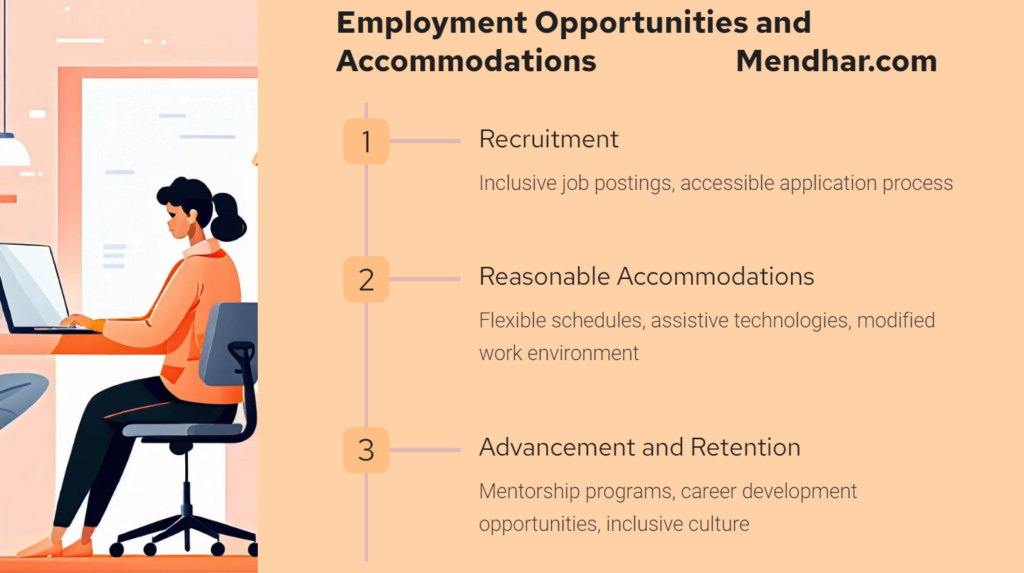
Disability Rights: Benefits And Concessions-Module 17 Answer key
1) The general symptoms that are associated with Specific Learning Disability (SLD) include –
– with Auditory
– and Visual
– Problems Perception/Processing
– Written Expression Deficits
– Challenges in Mathematics
– ✅️ All of the above
2) All the areas of child development should be carefully observed by the teacher, because –
– Makes it easier to understand the child’s abilities or disabilities
– To provide a conducive environment
– Early intervention
– ✅️ All of the above
3) What is the name of the condition marked by an ongoing pattern of inattention and/or hyperactivity, impulsivity that interferes with functioning development?
– Intellectual Disability
– Attention Deficit Hyperactivity Disorder (ADHD)
– Slow Learners
– None of the above
– ✅️ Attention Deficit Hyperactivity Disorder (ADHD)
4) Intellectual Disability is a condition characterized by significant limitations in –
– Intellectual Functioning
– Problem Solving Difficulties
– Dependence on Others for Activities of Daily living
– ✅️ All of the above
5) Unique Disability ID Card (UDID) is also known as
– Swavalamban Card
– Disability Card
– Identity card
– Swasthya card
– ✅️ Disability Card
Disability Rights: Benefits And Concessions-Module 17 Answer key
6) Neurodevelopmental Disorders (NDD) impact the functioning of the brain which affects the –
– Child’s Behavior
– Learning & Language Ability
– Non-verbal communication
– ✅️ All of the above
7) What are the common types of Neurodevelopmental Disorders (NDD) found among children with special needs (CWSN)?
– Learning Disability
– Autism
– Intellectual Disability
– ✅️ All of the above
8) Some examples of multiple disabilities are –
– Visual Impairment with Intellectual Impairment
– Autism with Intellectual Impairment and ADHD
– Cerebral Palsy with Intellectual Impairment and Autism
– ✅️ All of the above
9) After independence, in the year……….. an Act was brought into motion for the Persons with Disabilities (PWD) in India.
– 1995
– 1996
– 2005
– 1961
– ✅️ 1995
10) According to the RPWD Act 2016, ‘. ..’ is defined as “heterogeneous group of conditions wherein there is a deficit in processing language; spoken or written, that may manifest itself as a difficulty to comprehend, speak, read, write, spell, or to do mathematical calculations”.
– Specific Learning Disability
– Autism
– Attention Deficit Hyperactivity Disorder (ADHD)
– None of the above
– ✅️ Specific Learning Disability
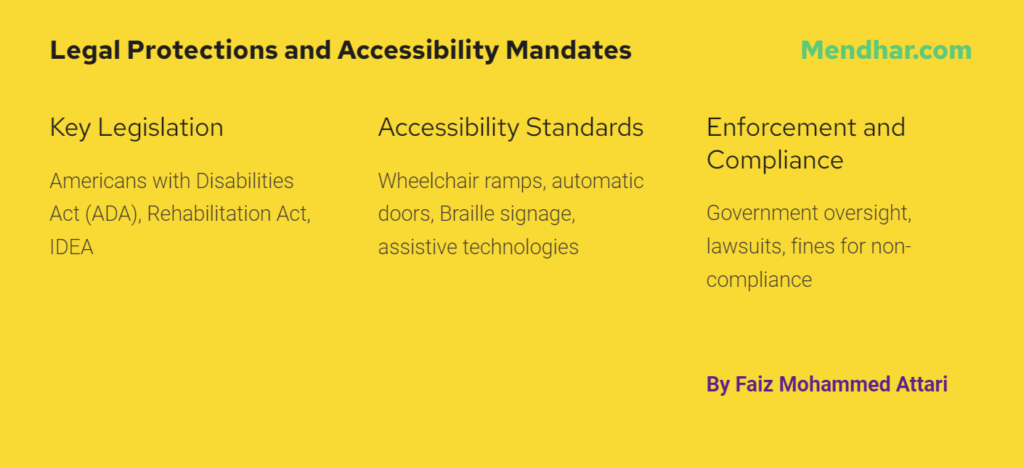
Disability Rights: Benefits And Concessions-Module 17 Answer key
11) A complex, lifelong neuro-developmental disability which is characterized by impairment in social communication and interaction, and restricted, repetitive patterns of behaviour, interests, or activities. This disability is known as –
– Learning Disability
– Autism
– Intellectual Disability
– None of the above
– ✅️ Autism
12) Persons with Disabilities (PWD) should have this certificate to be able to have access to all the facilities provided by the government-
– Ration Card
– Disability card or UDID
– Psychological Assessment
– Aadhar Card
– ✅️ Disability card or UDID
13) The recommendations made under Inclusive Education are
– Equal Participation
– Equal Opportunity
– Equal Rights
– ✅️ All of the above
14) According to the 2011 census, how many people with disabilities are there in India?
– 26.8 Million
– 10 Million
– 12 Million
– 30 Million
– ✅️ 26.8 Million
15) As per the RPWD Act 2016, how many types of disabilities are there?
– 21
– 29
– 07
– 6
– ✅️ 21
